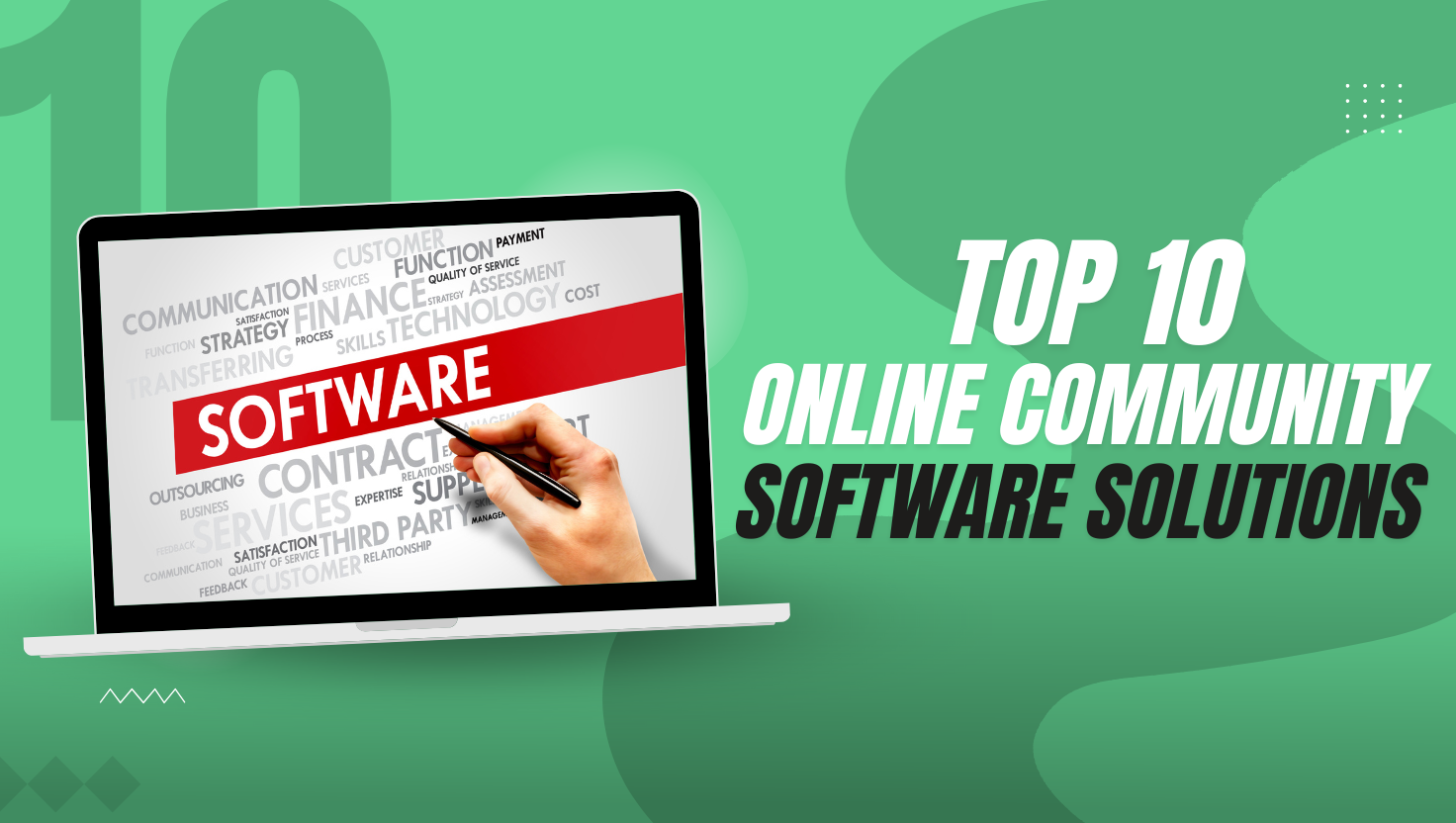
So, you've grasped the power of a vibrant online community for your association. You understand that moving beyond basic administrative functions to truly foster member-to-member engagement is the key to retention, value, and growth. But now comes the big question: how do you actually choose the right community platform from the myriad of options out there?
It can feel overwhelming, like navigating a tech jungle where everyone claims to be the "lion king". This step-by-step guide is your map to finding the ideal association membership software that empowers your community and simplifies your life.
Step 1: Define Your "Why" – Beyond Just "We Need a Forum"
Before you even look at a single platform, get crystal clear on your goals. What do you truly hope to achieve with an online community?
- Increase Member Engagement? By how much? (e.g., "We want 30% of our members to participate in discussions monthly.")
- Improve Member Retention? How will the community directly contribute to this?
- Enhance Knowledge Sharing? Will it be a place for FAQs, best practices, or curated content?
- Facilitate Networking? Is peer-to-peer connection a primary driver?
- Generate Non-Dues Revenue? Could you offer premium content or sponsored groups?
- Reduce Support Inquiries? By enabling self-service and peer support?
Be specific. These goals will act as your compass throughout the selection process. Involve key stakeholders from membership, communications, events, and even a few active members in this brainstorming phase.
Step 2: Assemble Your Dream Team (Your Selection Committee)
Although this can be done individually, diverse input increases your chances of making the right choice. Gather a small, cross-functional team to spearhead the selection process. Include representatives who will:
- Use the platform daily: Membership managers, community managers, communications specialists.
- Oversee the data: IT or data specialists.
- Manage the budget: Executive leadership.
- Benefit from its success: Board members or volunteer leaders who understand member needs.
This diverse perspective ensures all critical needs are considered.
Step 3: Map Out Your "Must-Haves" vs. "Nice-to-Haves"
Based on your "why," create a detailed list of features. Categorize them rigorously.
"Must-Have" Features (Non-negotiables):
- User Profiles: Robust and customizable.
- Discussion Forums/Groups: Core functionality for interaction.
- Content Sharing: Ability for members to post, comment, and share.
- Admin Controls: Moderation tools, user management.
- Reporting & Analytics: To track engagement and measure success.
- Integration Capabilities: Crucially, how well does it connect with your existing association membership software (AMS/CRM) for member data? This is non-negotiable for a seamless experience.
- Security & Privacy: Essential for protecting member data.
- Scalability: Can it grow with your association?
- Mobile Responsiveness: A good chunk of your members will access it on the go.
"Nice-to-Have" Features (Bonus points):
- Event Management & Calendar: Integrated event listings and registration.
- Gamification: Badges, leaderboards to encourage participation.
- Direct Messaging: For private peer connections.
- Resource Library: For organized content.
- Volunteer Management: If applicable.
- Personalized Feeds: To show members content most relevant to them.
- Monetization Tools: For premium content or sponsorships.
Step 4: Research, Research, Research (and Ask for Demos!)
Now that you know what you're looking for, hit the internet. Look at reputable review sites (G2, Capterra), industry publications, and even what other associations you admire are using.
Create a shortlist of 3-5 platforms that seem to fit your criteria. Then, schedule demos with each vendor. During the demo:
- Come prepared with your "must-have" list. Don't let them just show you shiny features; make sure they address your specific needs.
- Ask about their integration capabilities with your existing association membership software system. This is often where the rubber meets the road.
- Inquire about pricing models (per user, per feature, etc.) and any hidden costs.
- Ask about implementation timeframes, training, and ongoing support.
- Request references from similar associations.
Step 5: Test Drive It (Pilot Programs & Trials)
A demo is great, but getting hands-on is better. If possible, ask for a trial period or a sandbox environment where your team can truly experiment with the platform's features.
- Can you easily set up groups?
- Is the interface intuitive for members?
- How easy is it to moderate discussions?
- Can you pull the reports you need?
Consider a small pilot program with a handful of tech-savvy or particularly engaged members to get their feedback. Their insights will be invaluable.
Step 6: Evaluate, Compare, and Make Your Decision
Bring your selection committee together. Review all the information you've gathered: demo notes, trial feedback, pricing, and support details.
- Score each platform against your "must-haves" and "nice-to-haves."
- Discuss the pros and cons openly.
- Consider the vendor relationship: Do they seem responsive and genuinely interested in your success?
- Factor in long-term costs beyond the initial setup, including ongoing maintenance and potential upgrades.
Remember, the "best" platform isn't necessarily the one with the most features, but the one that best aligns with your specific goals and budget, and importantly, integrates well with your existing administrative backbone.
Choosing a community platform is a significant investment, but when done thoughtfully, it lays the groundwork for a more engaged, connected, and ultimately, more valuable association for years to come. Happy hunting!





.png)
